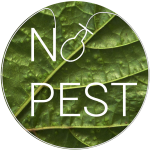Non-Conventional Peptide Self-Assembly into a Conductive Supramolecular Rope

Structures composed of alternating α and β amino acids can give rise to peculiar secondary structural motifs, which could self-assemble into complex structures of controlled geometries. This work describes the self-assembly properties of an α,β-peptide, containing three units of syn H2-(2-F-Phe)-h-PheGly-OH, able to self-organize on surfaces into a fascinating supramolecular rope. This material was characterized by AFM, electronic conduction and fluorescence measurements. Molecular dynamics simulations showed that this hexapeptide can self-assemble into an antiparallel β-sheet layer, stabilized by intermolecular H-bonds, which, in turn, can self-assemble into many side-by-side layers, due to π-π interactions. As a matter of fact, we demonstrated that in this system, the presence of aromatic residues at the intramolecular interface promoted by the alternation of α,β-amino-acids in the primary sequence, endorses the formation of a super-secondary structure where the aromatic groups are close to each other, conferring to the system good electron conduction properties. This work demonstrates the capability and future potential of designing and fabricating distinctive nanostructures and efficient bioelectronic interfaces based on an α,β-peptide, by controlling structure and interaction processes beyond those obtained with α- or β-peptides alone.








comments